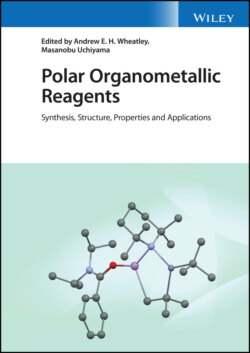Читать книгу Polar Organometallic Reagents - Группа авторов - Страница 27
1.5 Concluding Remarks
ОглавлениеMetalation of functionalized (hetero)aromatic compounds using a new breed of polymetallic reagent that operates according to the principles of inter‐metal synergy has enabled access to otherwise challenging molecular targets that have previously resisted approach using simpler reagents with unprecedented levels of selectivity. Specifically, metal–halogen exchange and then deprotometalation reactions have been developed to provide access to versatile organometallic species. Whilst these reactions traditionally employed highly polar (often unselective) s‐block organometallics (Li and Mg), the emergence of heterobimetallic systems, based on the combination of an alkali metal with a more electronegative metal has circumvented many of the selectivity and reactivity problems that limited the usefulness of monometallic reagents. Magnesiates, zincates, and cuprates have been deployed in metal–halogen exchange with high levels of functional group tolerance and have even proved compatible with solid‐phase synthesis. Meanwhile, avoidance of unwanted nucleophilic reactivity by the use of the sterically hindered amido base 2,2,6,6‐tetramethylpiperidide (TMP) has transformed deprotometalation chemistry, offering access to magnesium, zinc, aluminium, copper, silver, and cadmium ate complexes, each of which have found their place in (hetero)aromatic derivatization. Crystallographic work has proved vital for understanding the nature of heterobimetallic species, including reaction intermediates, while recent advances in spectroscopy have shed unprecedented light on the behaviour of selected reagents in solution. However, few systems have been probed in such depth yet. This area will no doubt prove essential to providing an understanding that will enable the rational design of the next generation of synergic reagents. These will offer new reactivity and cost‐benefit ratios based upon new amide ligands with differing steric properties and potentially inclined to encourage the nonstoichiometric or even catalytic action of synergic bases reported to date in only a very few, selected examples. It will also seek to take advantage of the vast array of bimetallic combinations available to the modern chemist, seeking new and more easily handled alkali metal components – for example predicating ate complex formation on alkali metal amides rather than less stable alkali metal–carbon bonded organometallics – whilst also introducing other possibilities for the less electropositive metal.
